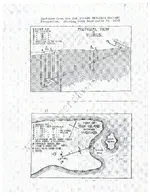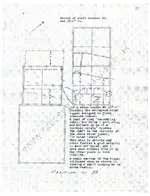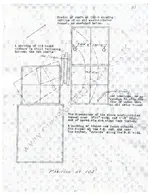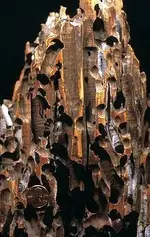So there are numerous facts pending that show the presence of coconut fibers, with scientific backing in numerous tests.
Then they found Eel Grass as well......seems they were quite the farmers.......
Do you think the reason that the Island is populated with Oaks is due to the fact that someone once brought these tree seeds.....acorns, back in the times of the first norse and gaelic explorers? Leaving the first knowledge of this location mapped somewhere? The norse were such great explorers to have braved through the Volga and even into the Mediterranean through the Bosporus Straight. I would assume their dedication to their God Odin.....was something of a very close relation to nature.....so their god just happened to be associated with the Red Oak......coincidence?
Lets assume the discovery of this area, and further inland, from the
Gaelic explorer, St Brendan, The Navigator was before this time due to recent explorations. He made it here first......and his Gaelic Cross is found scribed on the coast line of Nova Scotia. He left in the 6th century for America, and made it once, and then returned for a second journey from Ireland. !!! In a skin boat......whoa....
Did the Irish Discover America? Video - Exploration of North America - HISTORY.com
So not until 1000AD do the
Norse come over......leaving settlements in the area
Then we have the........Legend of the
Templars in the 1300's, and their
Spanish allies, who chart their empire towards the new world.......
Then the
French, then the
British
So somewhere in between all of this historical migration and movement, someone slips in the idea that it was a fleet of Pirates........
And all of history is lost to a debunked Pirate Myth........? Over Coconut Fibers.........
The issue is someone dug a pit, and channels, and numerous other mapped locations, and clearly had intention of being here for an extended period of time......they werent the natives, were they?? Nope....they had made a huge voyage..
The facts all add up to the fact that the pit was not just a trap......as there were other elements added to the Island that were making it seem like there were visitors that had brought exotic materials.......the dates are confirmed......and the known empires that made those voyages are confirmed......the Templars, were in the area
its really better if we can all use a fully drawn out chart of some kind......the kind that has a full listing of the history of the area, and not one filled with speculation......
For example......Joan Hope was supposedly labeled 'nuts' by the many doubters for believing there was UFO activity in the area, and for hosting Hippy Commune Parties....LOL...
It turns out that the area hosted one of the largest unknown flying object crashes, and by that it was witnessed by dozens of people who called 911, police, navy from two countries, and numerous coast guard vessels were all searching for a falling object in the ocean for two or three days, that was reported in multiple areas that day before the crash.....
Thats so funny too........the Mystery of Oak Island lost to the UFO Skeptics in the bunch......LOL....its so easy to see the negativity that came from the expose of Joan Hope's work making the whole affair look shotty at best.....









